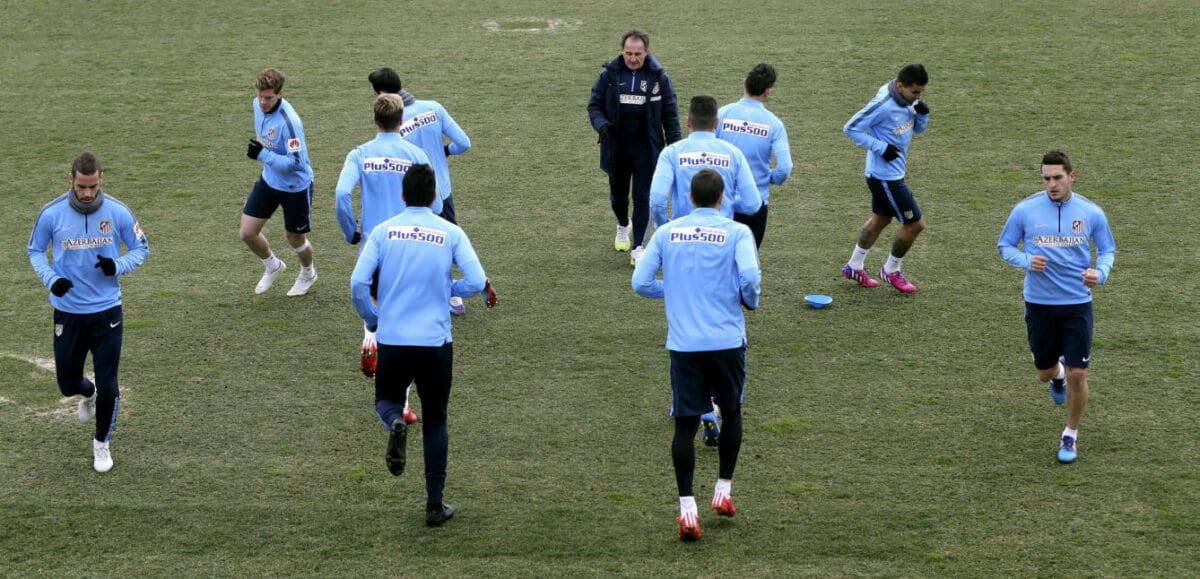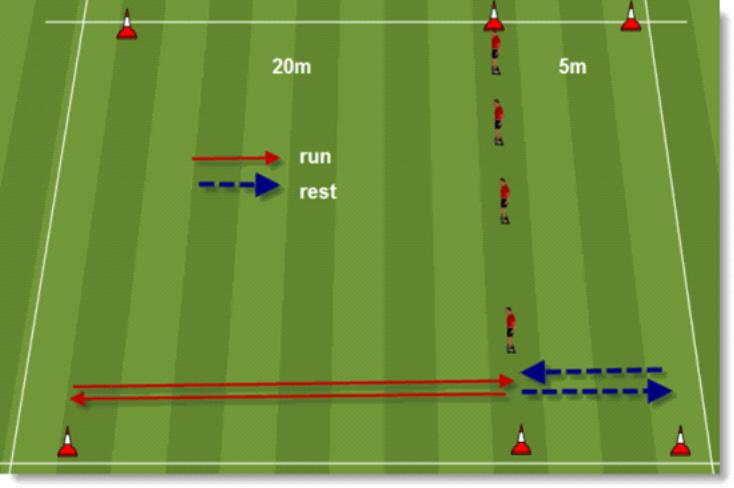We can define endurance training in football as the conditional ability that allows one to physically and psychologically withstand a specific workload, at varying intensity, over a determined period of time, maintaining the optimal level of performance both in the execution of the technical gesture and in decision-making, and ensuring a quick recovery as this ability improves with the programmed application of training (1)
We need a special, complex endurance training in football, which can be called multi-conditional and maintains a close relationship with other conditional abilities. This is because pure metabolic situations do not occur as in cyclic sports like athletics, swimming, etc., but rather an anaerobic alactic, lactic, and aerobic alternation is manifested (1).
Endurance in soccer can also be classified based on several criteria, one of which is the relationship between base endurance and specific endurance, according to the importance for the specific performance capacity of the sport practiced, in this case, soccer (5)
Endurance training in football called base endurance
Endurance in soccer called Base can be defined as the endurance that allows the development of other abilities. It can be classified into three categories:
-Base Endurance I:
It is the endurance in soccer called general endurance from a metabolic point of view. The objectives sought with its development are:
- Create a good base for the training of other physical condition abilities
- Increase endurance in soccer and recovery against competition training loads.
-Base Endurance II:
It is used in endurance sports to create the body’s adaptation to specific endurance efforts. Its objectives are:
- Establish a base for specific endurance training
- Activate reserves for greater performance increases
- Economize sports technique.
-Base Endurance III (Acyclic):
It is the characteristic endurance of team sports, like endurance in soccer. The objectives to be achieved are:
- Create an endurance base for a broad technical-tactical performance.
- Withstand high volumes of interval character.
- Familiarization with load modifications.
- Accelerate recovery capacity during low-intensity phases.
- Achieve better psychological tolerance to effort.
- Reduction of errors caused by fatigue and risk of injuries.
Endurance training in football: specific endurance
It is the ability to adapt to the load structure in a competition situation. It is determined by the particularities of the sport and the performance level. It is performed within the technical patterns of the competitive model or very close to it. It is the ability to achieve high performance under the temporal conditions of the sports specialty. This type of endurance in soccer can be viewed in two ways: (5)
- As a characteristic related to the sport.
- As an adaptation to the load conditions specific to the competition.
The factors on which specific endurance in soccer acts are:
- It will improve the endurance of the used musculature ensuring the optimal execution of specific movements.
- It will improve tolerance to repeated high-intensity runs as well as jumps, hits, starts, etc., present in the competition.
- It will allow maintaining a higher pace in competition actions for a longer time.
- It will better adapt to changes in the game pace required by the competition.
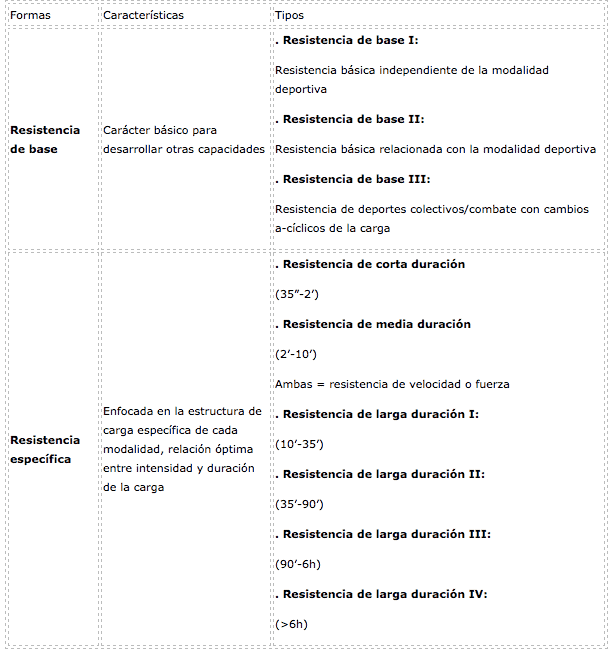
In the means that will be used for the improvement of specific endurance, mainly the competition itself, adapted training matches, and games, all the parameters that configure the structure of soccer will be present, that is: the technique or execution models, the game rules, the playing space and its use, the playing time and its use, motor communication, and sports motor strategy (2)
It is also necessary to propose methodological criteria that allow obtaining well-differentiated exercise sequences for each season preparation, in order to build the athletes’ fitness state. We differentiate 3 levels: General, directed, and special, which will allow the progressive transfer of endurance training in football capacity to the demands of the game (1)(3)(4)
- The general level creates the base of endurance in soccer and would be characterized by a conditional approach to all aspects of endurance, with a non-specific or very simple coordinative format, and without load or very low decisional load.
- The directed level is oriented to the specific demands of the modality and is characterized by a conditional approach to the aspects and endurance in soccer specific to the modality, with a specific coordinative format (technical gestures), and low decisional load.
- The special level is oriented to endurance in soccer and would be characterized by a conditional approach to the endurance aspects of the game at the level of the same or with slightly increased demands, with a fully specific coordinative format (technical gestures), and high decisional load (cooperation-opposition).
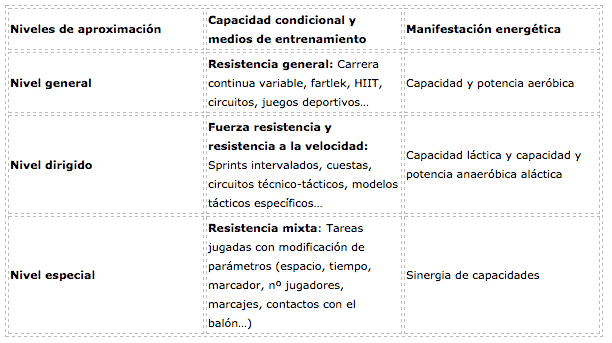
Due to the duration and efforts required during a match, endurance training in soccer should occupy an important place in the plans designed by coaches and physical trainers (1).
For this, we have different methods for the development of this ability.
Intensive continuous training
The objective of this training method is to improve the anaerobic threshold speed of the soccer player. For this, continuous running with volumes close to 30 minutes and intensities corresponding to 85-90% of the maximum heart rate seems to be a good option (6).
High-intensity interval training
Through high-intensity interval training, greater improvements in both aerobic and anaerobic capacity are produced than with continuous training (7), they have a shorter duration than continuous methods and greater motivation from the players (8). Therefore, high-intensity interval training should not be missing in our planning.
A long high-intensity interval training of 4 intervals of 4 minutes at 90-95% HRmax, with 3 minutes of recovery at 70% of HRmax is a good method to increase VO2max (9, 10).
Another option may be the application of short intervals of 15 seconds at 100% VO2max with 15 seconds of active recovery at 60% VO2max, performing 2-3 series of 8 minutes (11).
Repeated sprint ability (RSA)
The ability to repeat sprints or repeated sprint ability (RSA) is the ability to perform a certain number of high-intensity efforts, interspersed with incomplete recovery times (12). In a soccer match, players need to repeatedly perform maximum or submaximal efforts interspersed with brief recovery periods (12).
To improve the RSA training parameters, the maximum effort duration should not exceed 6 seconds, with a pause ratio of 1:4 or 1:6 (9). It seems that repeated sprint training of 2-3 series of 5-6 repetitions of 15-20 meters with 14 seconds of passive recovery or 23 seconds of active recovery is a good method for improving this quality during the season (15).
Small-sided games
Small-sided games (SSG) are specific soccer training protocols designed to develop technique, tactics, and physical abilities (16). They are collective duels developed in a common space and with simultaneous participation (17), usually in reduced spaces, with the modification of various rules and involving a smaller number of players compared to the regulatory soccer 11 (18).
The use of these games in training is based on the premise that greater performance improvements occur when the specific demands of the sport are replicated (18). A 4 vs. 4 work shows a maximum oxygen consumption of around 82% and an average blood lactate level of 4.5 to 4.9 mmol (20). One of the benefits of SSG is that by modifying the space, the number of players, the duration, and other variables, we can influence the internal and external load of the player according to the task or session objective.
From a physical point of view, soccer is a sport with a total duration of approximately 90 minutes, which is why endurance in soccer becomes really important within this modality, but… why evaluate it?
- It allows establishing a reference value for our players
- To know the level of our squad by comparing it with existing data
Method and means of evaluating endurance in soccer
Method
The method used is a field test called the yo-yo test, created by the Dane Jens Bangsbo. Despite the existence of numerous field tests for the evaluation of endurance, this test has proven to be one of the best indirect tests worldwide with the aim of measuring an individual’s ability to perform intermittent efforts that gradually increase in intensity (22).
This test stands out among others because it closely resembles the efforts made in the modality, where there is rest or recovery between each effort, and another strong point is the possibility of evaluating a large group simultaneously. It is valid for both sexes and it seems that the individual performance differences in the YYIRT are mainly found in:
- Training status
- Season timing
- Explosive strength of the lower limb
Despite being a reference test in the assessment of endurance in soccer, it does not consider values that are determinant in this quality such as VO2 MAX (24). Although we must know that in terms of soccer, it is not a reference parameter since even top-level players do not present high oxygen consumption values, however, we can estimate the oxygen consumption from the distance covered by applying the following equation:
YO-YO IR1TEST: VO2MAX(ML/MIN/KG)=IR1 DISTANCE(M) X 0.0084 + 36.4
The test consists of performing back-and-forth runs over a distance of 20 meters with a progressively increasing speed, until exhaustion is reached.
The 20 meters can be delimited by markers/cones which athletes must surpass upon hearing the sound signal. Between each gradual increase in speed, there is a recovery period also delimited by a distance of 5 meters, which must be performed so that the subject can recover and prepare for the next sound signal. The athlete who arrives late to two sound signals will be eliminated from the test and will be recognized at the previous level they were performing (23).
Means
The strong point of this test is the means, as the material requirements are minimal. It will simply suffice with a measuring tape, cones or markers, a computer or audio device that plays the YO-YO IRT1 recording.
Conclusions on endurance in soccer
Once the test is completed, we will obtain individual data from each player, which will provide us with the level of endurance in soccer and the meters covered in the test. This result can be checked in the following table, which offers us the meters covered and the speed reached according to the level at which the player reached exhaustion.
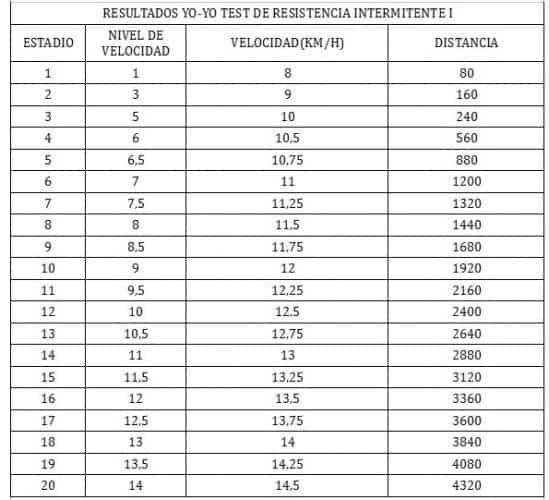
Finally, a small table with reference values is shown where we can place the members of our squad based on the meters covered by our players in the test.

Therefore, a combination of continuous training, high-intensity interval training, repeated sprint training, and training through small-sided games is recommended for the improvement and maintenance of endurance in soccer. Through these methods, we will ensure that players optimally adapt to competitive demands.
- Endurance is the conditional ability that allows us to withstand physically and psychologically the competition loads, and therefore its training is fundamental in soccer
- Endurance in soccer should be worked as a special ability, since it is different from other sports (especially cyclic ones) and the training means should preferably approach or simulate competitive or near-competitive situations
- Despite taking sessions to directed or special situations, it is important to have a good base level on which to develop the rest of the abilities
Bibliography
- Casáis, L (2011). Notes on the subject High performance in soccer II. Faculty of physical activity and sports sciences. Pontevedra
- Hernández Moreno, J. (2000). Initiation to sports from its structure and dynamics. INDE Editorial
- Lago, C. (2002). Physical preparation in soccer. New Library. Madrid
- Weineck, J. (1994). Total soccer. Barcelona: Paidotribo
- Zintl, F. (1991). Endurance training. Barcelona. Martínez Roca
- Campos-Vazquez, M.A. (2012). Considerations for the improvement of endurance in soccer. Apunts. Physical Education and Sports. No. 110, 4th quarter, 45-51.
- Gorostiaga E., Walter C., Foster C., and Hickson R. (1991). Uniqueness of interval and continuous training at the same maintained exercise intensity. Eur J Appl Physiol Occup Physiol 63: 101–107.
- Turner A., Steward, P. (2014). Strength and Conditioning for Soccer Players. Strength and conditioning journal 36(6):96-106.
- Helgerud J, Engen L, Wisloff U, and Hoff J. (2001). Aerobic endurance training improves soccer performance. Med Sci Sports Exerc 33: 1925–1931.
- Hoff J, Gran A, and Helgerud J. (2002). Maximal strength training improves aerobic endurance performance. Scand J Med Sci Sports 12: 288–295.
- Buchheit, M., & Laursen, P. B. (2013b). High-intensity interval training, solutions to the programming puzzle: Part I: cardiopulmonary Emphasis. Sports Med, 43(5), 313338.
- Arjol, J. L., Gonzalo, O. (2012). Reflections on RSA (Repeated Sprint Ability) training in soccer. Journal of Physical Preparation in Soccer.
- Carling, C., Le Gall, F., Dupont, G. (2012). Analysis of repeated high-intensity running performance in professional soccer. J Sports Sci;30(4):325-36.
- Little T and Williams AG. (2007). Effects of sprint duration and exercise: rest ratio on repeated sprint performance and physiological responses in professional soccer players. J Strength Cond Res 21: 646–648.
- Buchheit, M., Mendez-Villanueva, A., Delhomel, G., Brughelli, M., & Ahmaidi, S. (2010). Improving repeated sprint ability in young elite soccer players: repeated shuttle sprints vs. explosive strength training. [Controlled Clinical Trial]. J Strength Cond Res, 24(10), 2715-2722.
- Rampinini E, Impellizzerri FM, Castagna C, Abt G, Chamari K, Sassi A, and Marcora SM. (2007). Factors influencing physiological responses to small-sided games. J Sports Sci 25: 650–666.
- Parlebas, P. (2001). Games, sport, and society. Lexicon of motor praxeology. Barcelona: Paidotribo.
- Casamichana, D., y Castellano, J. (2010). Time-motion, heart rate, perceptual and motor behavior demands in small-sided soccer games: Effects of pitch size. Journal of Sports Sciences, 28(14), 1615-1623.
- Rushall, B., y Pyke, F. (1990). Training for Sport and Fitness. Sydney: MacMillan.
- MacLaren D, Davids K, Isokawa M, Mellor S, and Reilly T. (1988). Physiological strain in 4-a-side soccer. In: Science and Soccer (2nd ed). Reilly T and
- Williams AM, eds. New York, NY: Routledge. pp. 115–129.
- Bangsbo, J(1994).The physiology of soccer – with special reference to intense intermittent exercise. Acta physiol.Scand. 619: 1-155.
- Bangsbo,J(2008).The yo-yo intermittent recovery test.A useful tool for evaluation of physical performance in intermittent sports.Sports med.Vol 38 1:37-51.
- Krustrup, P.Mohr, M.Amstrup, M.Rysgaard, T.Johansen, J.Steensberg, A.Pedersen, K y Bangsbo, J.(2003).The yo-yo intermittent recovery test:Physiological response,Reliability, and Validity. Med.Sci.Sports Exerc .,Vol 35,No 4.
- Bangsbo,J..and Lindquist(1992).Comparison of various exercise tests with endurance performance during soccer in professional players.Int .J.Sports med., 13(2) : 125-132.
